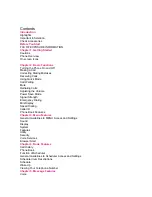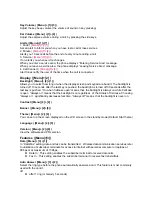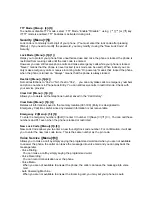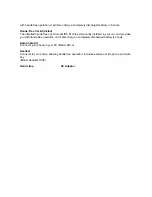
Turning the Phone Off
1. Press and hold until display screen will be turned off, and then release the key.
2. Protect the antenna by pushing it back into the phone, if extended.
Making a Call
When you make a call, follow these simple steps:
1. Make sure the phone is turned on.
l
If not, press [END/PWR].
2. Enter the phone number with area code, if needed.
3. Press [SEND].
l
If the phone is locked, enter the lock code.
l
“Call Failed” indicates that the call di d not go through.
4. Press [END/PWR] to disconnect the call.
Correcting Dialing Mistakes
If you make mistakes in dialing a number, press [CLR] key once to erase the last entered digit or
hold down [CLR] for at least two second to delete all digits, or simply press soft key 2 [BACK] to
exit dialing state.
Receiving Calls
1. When the phone rings, open cellcase or If cellcase is open, press any key (except [END/PWR],
[
5
][
6
], [
3v4
]) to answer.
l
If you press the key [END/PWR], Side Keys ([
5
][
6
]) once when you receive a call, you
can hold the present call and ring sound or vibration stops. If you press the [END/PWR]
key, Side Keys ([
5
][
6
]) twice, the present call is terminated.
2. Press [END/PWR] to disconnect the call.
In call waiting mode, the present call is on hold as you answer another incoming call.
This service is provided by your service provider.
When the call waiting function is activated, your phone will beep to let you know if you have an
incoming call. Your phone may also display the incoming caller’s identification.
Dialing a call from Phone Book
You can place a call from any memory location either by speed dialing or by pressing [SEND] while
looking up the memory location.
One-Touch Dialing
: One-touch dialing is a convenient feature which enables you to dial
frequently used numbers in your personal phone book by pressing a key (for memory location 1
through 8).
l
Entry 9 is designated to Emergency Call.
l
For locations 1 to 8, you can use one-touch dialing (if enabled, see “One -Touch” on page
37.) by pressing and holding down the key corresponding to the memory location.
OR

















